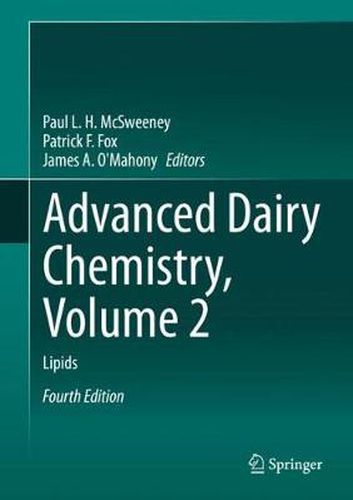Readings Newsletter
Become a Readings Member to make your shopping experience even easier.
Sign in or sign up for free!
You’re not far away from qualifying for FREE standard shipping within Australia
You’ve qualified for FREE standard shipping within Australia
The cart is loading…






This title is printed to order. This book may have been self-published. If so, we cannot guarantee the quality of the content. In the main most books will have gone through the editing process however some may not. We therefore suggest that you be aware of this before ordering this book. If in doubt check either the author or publisher’s details as we are unable to accept any returns unless they are faulty. Please contact us if you have any questions.
The Advanced Dairy Chemistry series was first published in four volumes in the 1980s (under the title Developments in Dairy Chemistry) and revised in three volumes in the 1990s and 2000s. The series is the leading reference on dairy chemistry, providing in-depth coverage of milk proteins, lipids, lactose, water and minor constituents.
Advanced Dairy Chemistry Volume 2: Lipids, Fourth Edition, is unique in the literature on milk lipids, a broad field that encompasses a diverse range of topics, including synthesis of fatty acids and acylglycerols, compounds associated with the milk fat fraction, analytical aspects, behavior of lipids during processing and their effect on product characteristics, product defects arising from lipolysis and oxidation of lipids, as well as nutritional significance of milk lipids.
In the years since the publication of the third edition there have been significant developments in milk lipids and these are reflected in changes to this volume. Most topics included in the third edition are retained in the current edition, which has been updated; in some cases, new authors have given their perspective on certain topics. Chapters on nutritional significance of dairy lipids have been considerably revised.This authoritative work summarizes current knowledge on milk lipids and suggests areas for further work. It will be very valuable to dairy scientists, chemists and others working in dairy research or in the dairy industry.
$9.00 standard shipping within Australia
FREE standard shipping within Australia for orders over $100.00
Express & International shipping calculated at checkout
This title is printed to order. This book may have been self-published. If so, we cannot guarantee the quality of the content. In the main most books will have gone through the editing process however some may not. We therefore suggest that you be aware of this before ordering this book. If in doubt check either the author or publisher’s details as we are unable to accept any returns unless they are faulty. Please contact us if you have any questions.
The Advanced Dairy Chemistry series was first published in four volumes in the 1980s (under the title Developments in Dairy Chemistry) and revised in three volumes in the 1990s and 2000s. The series is the leading reference on dairy chemistry, providing in-depth coverage of milk proteins, lipids, lactose, water and minor constituents.
Advanced Dairy Chemistry Volume 2: Lipids, Fourth Edition, is unique in the literature on milk lipids, a broad field that encompasses a diverse range of topics, including synthesis of fatty acids and acylglycerols, compounds associated with the milk fat fraction, analytical aspects, behavior of lipids during processing and their effect on product characteristics, product defects arising from lipolysis and oxidation of lipids, as well as nutritional significance of milk lipids.
In the years since the publication of the third edition there have been significant developments in milk lipids and these are reflected in changes to this volume. Most topics included in the third edition are retained in the current edition, which has been updated; in some cases, new authors have given their perspective on certain topics. Chapters on nutritional significance of dairy lipids have been considerably revised.This authoritative work summarizes current knowledge on milk lipids and suggests areas for further work. It will be very valuable to dairy scientists, chemists and others working in dairy research or in the dairy industry.